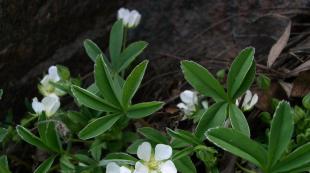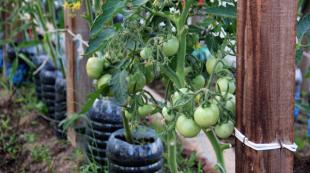With the song of each bird, a person is connected. A Brief Historical Overview of Human Use of Birds
Municipal educational institution
secondary school No. 42
Extracurricular activity "Where did the sparrow have lunch?"
(Methodological development within the framework of the action
"Help the wintering birds"

Komsomolsk-on-Amur
2016
Lesson type: combined with the use of ICT
Methods and forms of work:
frontal form of work;
search, explanatory and illustrative, practical method.
Technology:
multimedia;
developing;
health-saving.
Purpose of the lesson:
1) identify the ideological, semantic and artistic content of the works used;
2) to educate the norms of morality and morality through understanding the problem under consideration;
3) to teach the ability to interpret a work of art
Lesson objectives:
Educational:
develop the ability to formulate definitions of concepts;
develop the ability to express their thoughts, perceive and assimilate information;
enrich vocabulary students;
Developing:
implementation of the system-activity approach;
development critical thinking;
development of attention;
formation of UUD (personal, regulatory, cognitive):
development of the ability to formulate and prove one's point of view;
development of skills to analyze, compare, generalize;
develop the ability to apply new knowledge;
development of creative, speech abilities of students;
formation of logical skills;
development of the ability to rely on what is already known, on one's own subjective experience;
development of the ability to formulate a problem.
Educational:
fostering interest and respect for literature;
education of a value attitude to the word;
creation of conditions for the education of norms of morality and morality through understanding the meaning of the problem under consideration
Main activities : expressive reading, oral answers to teacher's questions, work with text, vocabulary work.
Competencies:
general educational : Learning to analyze the text on the questions of the teacher: the position of the author
Informational : find information, be able to convey it.
Equipment : PC, a set of illustrations for the lesson, videos
Lesson progress
1. Organizational stage, introduction to the problem
Good afternoon guys. Take your seats. I hope that today we will work very amicably and actively.
1) Emotional charging:
How good it is to wake up at dawn
Look at the world, watch the birds
And to know that it is higher than happiness to live in the world
There can be nothing in the world

………………………………………………………….
Everything that is simple, everything that is difficult is beautiful,
And how not to admire you and me
Any earthly creature - albeit insignificant,
Earthly unique beauty!
………………………………………………………

Everything is beautiful: both the falcon and the grasshopper,
Green and yellowing leaf
And rain, and snowfall, and even, and odd,
Everything that comes on time or not on time.
(Vitaly Gorgol)
What is this beautiful poem about? What paintings inspired the author?
2) Work on the inclusion of associative thinking.
Look at the proposed image (author Lisitsa M.D.) and tell me if it corresponds to the main idea of the poem you listened to? (presentation slide )
















Of course, there are no birds in this image, and without birds, nature would be empty.
2. Formulation
And can it happen that there will be no birds on planet Earth? (On the entire planet is unlikely).
Why do birds make us people happy? (unusual wonderful world nature is the feathered world. Birds inhabit all corners of our planet. They delight us with beautiful singing, various plumage. The world would be boring without birds chirping) 
And where the number of birds can be reduced and why? (Where it is cold and frosty, when it is difficult for birds to forage on their own) 
( presentation slide )
2. Formulation of the topic and tasks of the lesson by students. Correction by the teacher.
Try to formulate the broad topic of our lesson: what are we going to talk about today? ("Wintering Birds") and goals.
3. A word about a sparrow
Today we will not talk about all the wintering birds, but only about one. Guess what bird this is?
In a gray fur coat
And in the cold he is a hero
Jumps, frolics on the fly,
Not an eagle, but still a bird. 
And why today we will talk specifically about the sparrow, you will try to determine for yourself by listening to the next song. (V. Kom "Song of the Sparrow", Appendix 1 )
Of course, the patriot sparrow does not leave his homeland in difficult times. Sparrows decorate a person's life on harsh winter days: they jump along the paths, sit in clusters on trees, chirp merrily in a harmonious chorus in warm weather. And they will perform a solo song for listeners with pleasure! (Video "Sparrow Concert", Annex 2 )
Come, Andreika, graysparrow-
Learn music, sing like a nightingale.Will you sing scales with usAnd then you can even become a soloist.Sparrow Andrey outside the window jump-jump"I'm just a bird, I'm not a studentChick-chirp-chick-chick-chickChick-chirp-chick-chickI’m somehow not used to singing according to your notes. ”

I. Fink
4. Where did the sparrow dine?
Let's listen to poems about sparrows by different authors, which the guys independently found and learned by heart for the lesson.
Reading poems by students

I. Fink
Viewing the video sequence “Everyone needs friends” (author Lisitsa M.D., Appendix 3)

I am an ordinary sparrowTo the Russian winter habitual.Though fierce coldI don't care about blizzards.If you put in the feederBread of a delicious loaf.Don't feel sorry for the birds,Become a friend sparrow.
N. Kukolev

I. Belyakov

V. Zvyagina
The bird's nests are emptyThe birds flew south.Turned out to be the bravestOur yard sparrow.Kholodov was not afraid Stayed with us for the winter.Snow covers the whole earth -Sparrows do not lose heart:They scurry about in a flock,Everything that meets peck.Don't feel sorry for the bread crumbs:The sparrow deserved them.You put a feeder on him -He calls his girlfriendAnd friends are all right there,The little ones peck merrily.And a cheerful knock went -Knock-Knock,Knock-Knock.Knock-Knock.

- How can you help sparrows in winter? What kind of knock-knock is heard? What do sparrows do?
So where can a sparrow dine in winter?
Watch the video "Where did the sparrow dine?" (Annex 4)
If the sparrow has no food in the cold, it will freeze and die. What do you think, in what weather is it most difficult for a sparrow to find food for itself? (In snowy weather, when all the grains are covered with snow, or in ice, in such weather a lot of sparrows die of starvation in winter)
5. Reading and analyzing the story " Winter debts "N. Sladkova
Sparrow chirped on a dunghill - and jumps! And the Crow-hag croaks with its nasty voice:
- What, Sparrow, rejoiced at, why chirped?
- The wings itch, Crow, the nose itches, - Sparrow answers. − Passion to fight hunting! And you don’t croak here, don’t spoil me spring mood!
- I'll ruin it! - Crow does not lag behind. - How do I ask a question!
- You scared me!
- And I'll scare you. Did you peck crumbs in the garbage in the winter?
− Pecked.
- Did you pick up grain at the barnyard?
- Picked up.
- Did you have lunch in the bird cafeteria near the school?
- Thank you guys for feeding me.
- That's it! - Crow is tearing himself up. “What are you thinking of paying for all this?” With your chirping?
- Did I use it alone? Sparrow was confused. - And the Tit was there, and the Woodpecker, and the Magpie, and the Jackdaw. And you, Crow, were...
- Don't confuse others! - Crow wheezes. - You answer for yourself. Borrowed - give back! Like all decent birds do.
- Decent, maybe they do, - Sparrow got angry. “But are you doing it, Crow?”
"I'm the first to cry!" Do you hear the tractor plowing in the field? And after him, I choose all kinds of root beetles and root rodents from the furrow. And Magpie and Jackdaw help me. And looking at us, other birds are trying.
“You don’t vouch for others either!” - Sparrow rests. - Others may have forgotten to think.
But the Crow does not let up:
- And you fly and check!
Sparrow flew to check. He flew into the garden, where Titmouse lives in a new nest box.
- Congratulations on your new home! - Sparrow says. - In joy, I suppose I forgot about debts!
- I didn’t forget, Sparrow, that you are! - Tit answers. - The guys treated me with delicious lard in the winter, and I will treat them with sweet apples in the fall. I guard the garden from codling moths and leafworms.
There is nothing to do, Sparrow flew on. He flew into the forest, there the Woodpecker knocks. I saw Sparrow, was surprised:
- For what need, Sparrow, did you fly into the forest to me?
- Yes, they require me to pay, - Sparrow chirps. - And you, Woodpecker, how do you pay? How do you pay?
“I’m trying so hard,” the Woodpecker answers. - I protect the forest from woodworms and bark beetles. I fight them without sparing my stomach! Even got fat...
“Look at you,” Sparrow thought. “And I thought…”
The sparrow returned to the dunghill and said to the Crow:
- Yours, hag, the truth! All for winter debts work out. Am I worse than others? How can I start feeding my chicks with mosquitoes, horseflies and flies! So that the bloodsuckers do not bite these guys! I'll pay back my debts!
He said so and let's jump up and chirp again on the dunghill. As long as there is free time. Until the sparrows hatch in the nest.
(
Reading the story is accompanied by a presentation slide show
)





How does Crow help people? Tit? Woodpecker?
How do sparrows help? What benefit do they provide? (They exterminate the enemies of plants - bugs, caterpillars and this save the crop).
Interesting fact: Once upon a time, many village sparrows were destroyed in China. And ... the next year, the entire crop was completely eaten by pests! People were left without a crop!
Sparrows help people. Let's say again, how can we help them? When sparrows really need our help? (There is little food in winter. Therefore, we feed the birds with grain and crumbs)
6. Listening to an excerpt from the story of the writer V. Lidin "Lark"

Sparrow Poems:
3. A complex sentence with several subordinate clauses.
Level C.
1.Continue definition:
a) homogeneous subordination is ...
b) consistent submission is ...
c) heterogeneous subordination is ...
2. Write down. Specify the type of submission. (No punctuation marks).
1. In the evening, when it calmed down a bit, they went to the pier to see how the ship would arrive. It seemed to him that they were all occupied only by the fact that they carefully concealed their ignorance and dissatisfaction with life. 3. Then she began to beg him to love her and not leave her to take pity on her poor and unfortunate. 4. Nadia, when she undressed and went to bed, for a long time it was still audible how the servants were cleaning downstairs, how angry the granny was.
3. Determine the type of subordination in a complex sentence and fill in the table.
a) (When), (which), [then].
b) , (what, (when) ,).
c) , (how), (how) and (how).
d) (Where), , (what).
e) (To) and () , .
e), (what), (which).
Type of submission:
Sequential
Parallel
Homogeneous
Level B.
1. a) Make sentence schemes. Determine the type of subordinate clauses with several subordinate clauses (sequential, homogeneous, heterogeneous subordination).
1. We knew that the snow would melt when spring came. 2. If you look at this portrait, it turns out that everything that is being done from behind is visible in the glass. 3. It was her house, where everyone loved her, and she loved everyone. 4. When mom and dad start talking in an undertone in the next room, for me this is a signal that the conversation will be about something interesting.
b) Compose similar sentences on your own and write them down.
2. Write off. Place punctuation marks, indicate the number of subordinate clauses. Determine the type of submission.
a) His parents were very rich people and had their own house on one of the main streets of the city, in which there was a garden, sheds and even a well from which the whole street took water. b) The boys talked about what had happened and laughed at Nikita who fell into the water and now sat gloomy and blue from the cold. c) How to make him feel good about himself and make everyone love him? d) And when he remembered the bright minutes of waiting and how long and patiently he waited, he wanted to inflict the most severe insult on himself.
Select the sentence that matches the scheme:
[indicative word, (what), n. ], (which).
Level A
At this beginning, make up a short story (at least 100 words), using complex sentences with several subordinate clauses. Make diagrams of these sentences, indicating the type of subordination.
Books are friends, the most thoughtful interlocutors who ...
4. Views subordinate clauses.
Level C.
I Finish the thought.
a) According to the structure and meaning of the NGN, they are located:
b) subordinate clauses answer the questions:
What? which?
Where? when?
What? who?
C) The subordinate predicate answers the questions:
What? who?
Who? what?
Which? which?
D) attributive clauses answer the questions:
Definitions
Add-ons
Circumstances
D) additional subordinate clauses answer the questions:
Indirect cases
All cases
Only them. P.
E) adverbial clauses answer the questions:
What? who?
What? who?
Circumstances.
II. Copy the text by inserting the missing punctuation marks. Make proposal plans.
A) The path rises .... on the gray rocks where you see ... tr ... tsya
Red pines in the sky. (I.S. Sokolov-Mikitov)
B) I ran up a small forest ... a stairwell that led to a room and for the first time in my life I went ... into the room of M (m) arya I (i) vanovna. (A. S. Pushkin.)
C) I went to the cabin where everyone was already sleeping and until dawn ... lay without sleep on the bunk (I. A. Bunin.)
D) It began to seem to me that I was not going from Moscow to my parents' house. (V. A. Soloukhin.)
E) I asked Alexander Ivanovich where the willows had gone for decades, decorating the square. (V. A. Soloukhin.)
III. Find the "third extra" by determining the meaning of the subordinate clauses.
Punctuation marks are not included.
1) It seemed to him that the moonlight penetrates through all the cracks and envelops the room. ().
2) I still firmly believe that science is the most important thing in people's lives. ().
3) They drank tea to drink in the garden where mignonette and tobacco bloomed. ().
1) He spoke about what everyone already knows. ().
2) It was one o'clock in the morning, the time when I was immersed in sleep. ().
3) Let's dream about the life that will be after us. ().
IV. Complete the table.
|
Types of adverbial clauses. |
Conjunctions and allied words. |
|
due to the fact that; |
|
|
Consequences |
|
|
how, |
|
|
Comparisons |
|
Level B.
I. Indicate the sentences in which errors were made and correct x. Determine the type of adjective.
A) Whoever does not come to the consultation will not know about the changes in the questions.
B) At this time they asked us about what we learned about the exams.
C) And watch how it cuts over the river
The blue water of the sun plow.
D) Here she sees Nellie, how on a cold winter night she knocks on the door of the county doctor Stepan Lukin.
E) Teddy suddenly realized that he had found the promised land, and came to the country of childhood.
II. Make proposals according to the schemes. Emphasize the grammatical basis. Indicate the means of communication. Specify the type of adjectives.
1. [- = so], (what)
2. (If -=), (-=)
3.[-,(which is -=) =]
4.[=],(what-=)
5.[- - =],(who =).
II. In which of the sentences the meaning of the subordinate clause is definitely incorrect? (no punctuation marks).
A) When they recently began to conduct electricity throughout the village, they faced one economic problem. (time circumstance)
B) In the spring, the earth warmed up and was enveloped in fogs so that grains and buds began to sprout under their warm steamy warmth. (a circumstance of the mode of action and degree.)
C) Now there is no need to occupy a fireman, because in Olepin the collective farmers built a new club more spacious than a fire shed. (time circumstance)
D) If you take collective-farm trucks, then after a good rain it is impossible to drive from village to village (a circumstance of the condition.)
Level A
Place punctuation marks in the text. Write an essay-reasoning on the topic: "What is the function of commas in NGN"
(Based on this text.)
Song of the Lark.
The lark sings uncomplicatedly, but in his song there is always the freshness of a summer morning, and when a person hears the lark's song, he becomes unconsciously happy. However, so much is connected with the song of each bird in a person that memories are awakened in him every time. The damp voice of the cuckoo wakes up the idea of something lost in youth about a spring somewhere in a lowland under a wooden footbridge…. And if a nightingale sings in the shady chill of some mysterious bushes, then a person will stop on the move, feeling how suddenly his heart began to beat with a young force of hopes, although much has already been forever left behind ... But the lark is simple-minded. He simply sings because the rye is ripening below and the sky is high above him, and maybe also because he feels his mission to make the world around brighter and louder.
CONCLUSION
Summing up the theoretical and practical results of the study on the problem of increasing educational motivation through the use of differentiated learning technology, we were convinced of its relevance for the school.
Monitoring of learning outcomes in Russian language lessons using differentiated learning technology in recent years has shown an increase in the percentage of knowledge quality, an increase in interest in the subject.
A differentiated approach to teaching in the Russian language classes helps to shape the educational activities of children, helps to increase the level of motivation in mastering the norms of the modern Russian language, taking into account mental and special linguistic abilities.
Having mastered this activity, students themselves begin to improve it, which leads to the development of their intellectual abilities, increased activity and independence in the classroom.
Summarizing the results of the work, we came to the conclusion that the children had an interest in such forms of learning activities as individual, pair, group. Having mastered the elements of differentiation of learning in learning activities, students try to overcome difficulties, see problem situations and establish ways to resolve them. Working in pairs, groups, students set a goal for the work performed, draw conclusions, learn to be sociable, learn to help each other, support, explain, perform self-examination, mutual examination, work independently in any situation. The child in his development is individual, and so that knowledge, received in the lesson, benefited him, and did not remain an empty phrase, the teacher needs to take into account the characteristics of each student. The main task of a pedagogical institution is to teach how to learn, which means being able to independently acquire knowledge in the process of search activities, apply the knowledge gained in practice, solve the task creatively, control and evaluate their activities. These skills help to form such a form of organization of the educational process as differentiation. Therefore, I believe that a differentiated approach to students in Russian language lessons is necessary condition further successful education.
BIBLIOGRAPHY
1. Alekseev SV. Differentiation in teaching subjects of the natural science cycle.-L., 1991.
2. Vashchenko A.A. Differentiated approach to students. // Russian language at school.- 1991.- No. 3
3. Groot R. Differentiation in education. // Director of the school, 1994, No. 5-6
4. GuzikN.P. Teaching organic chemistry. - M.. 1988.
5. GuzikN.P. Learn to learn. - M., 1981.
6.Differentiated teaching in Russian language lessons. Methodological guide./Compiled by L.K. Ivanova. - St. Petersburg, LOIRO, 2000.
7. Loshnova O.B. Level differentiation of training. - M., 1994.
8. Selevko G.K. Modern educational technologies. M., 1998
9.Unt I. Individualization and differentiation of learning. M., 2003
10. Unt I.E., Granitskoy A.S., Shadrikova V.D. Individualization and differentiation of training. - M., 1990.
11. Firsova V.V. Level differentiation of training based on mandatory results.
Russian language. “Competent writing is not ... - one of the main tasks lessons Russian language in primary school because... A letter from memory. certain place on the lessons Russian language I take the letter from memory. ...At Russian lessons (6)
LessonTechnologies of the system-activity approach on the lessons Russian language Zheleznova N.V., teacher Russian language MBOU Gymnasium No. 133 of Samara ... implementation of a personal-activity approach on the lessons Russian language collaborative learning is used, ...
At Russian lessons (2)
LessonApplication of technologies "Methods of critical thinking" on the lessons Russian language. How best to organize lesson. AT modern school used ... change in numbers and cases. ? AT Russian language six cases: nominative, genitive, dative...
It takes months for spring to pass across the Russian land from the south to the north.. of its edge. Still more necessary .. more this land along, from the east to the west. Vz..katny hour a man went out to the sea. Pine trees on the long slopes cast long shadows. (W, N) here, at the sandy k..sy, which separates the Vistula Bay from the Baltic Sea, the extreme west of the Russian land. The man at the sand dunes is the last to say goodbye .. to the son of today. The day is dim..t sails on fishing boats rec..renel. And now the lighthouse takes the night watch and shows the way to Kaliningrad. And at the same time, the beam of the lighthouse at Cape Dezhnev on the Chukotka Peninsula goes out..t beam.. There, at the eastern .. edge of the Russian ..isky land, the rocky ..leafy shores of the peninsula are built in .. already morning. Over tens..ti thousand kilometers..meters separate the lighthouse on the sandy k..se from the lighthouse on the sk..leafy peninsula, and on all this huge pr..space - Russia..ia. Title the text. Subject of the text.
1. Write a text style!
2.Write the text type!
buy her some gift. What would you give her?
Mom began to give advice, but then I intervened in the conversation:
And my friends in childhood had an unwritten law: on birthdays, give only what is made with your own hands.
Well, you know, grandpa! In our class they will say that I am greedy and that I am a bad friend, - the granddaughter said.
Title the text and write a continuation of who is right grandfather or granddaughter and how it all ended. Thanks in advance!!!
Presentations / About L. Landau from the book. "L. Landau. Pages of Life (Bessarab) Expositions
About L. Landau from the book. "L. Landau. Pages of Life" (Bessarab)
In 1922, Lev Landau successfully passed the exams at Baku University. He was enrolled in the Faculty of Physics and Mathematics, immediately in two departments - mathematical and natural. He was very interested in chemistry, but after the first semester he left the natural department, realizing that physics and mathematics were more to his liking.
Freshman Landau was the youngest at the university. At first, this made him extremely depressed. As he walked along the corridors, he raised his shoulders and bowed his head: it seemed to him that he looked much older that way.
Leo was immediately captured by student life. Students took teaching seriously, slovenliness was out of fashion. You came to study - study, if you don't want to - leave. Many worked and studied. Scholarships were not paid to persons of non-proletarian origin.
In the year the lion entered the university, eighteen students were admitted to the first year of the physics and mathematics department, the next year - six more. Mathematics students sported pre-revolutionary uniform caps. The exception was Landau, who had an embroidered oriental skullcap. He was distracted, forgot to shoot it in the audience, for which he received comments. For his own peace of mind, he decided not to wear a skullcap and often wore it not on his head, but in his pocket.
Landau behaved very modestly, he was always ready to help out a comrade: to solve a control, to prompt at an exam. But still he stood out among the students; although he didn't want to. It started shortly after entering university. Landau's classmates especially remembered Professor Lukin's lecture, at which Lev asked the lecturer a question.
Petr Petrovich Lukin was the brightest figure in the mathematics department. Five years before the events described, he was a professor at the Artillery Academy of the General Staff. He knew mathematics brilliantly and was an excellent lecturer. There were, however, rumors that the former general was distinguished by ferocity in examinations. The students were afraid of the session beforehand and treated Lukin with respectful and polite apprehension.
Lukin thought for a long time before answering Landau's question. It became very quiet in the audience, everyone was sitting, afraid to move. Lukin asked Lev to come up to the blackboard. Instantly, the board was covered with mathematical signs.
“Chinese writing,” someone whispered.
Lukin and Landau began to argue. And suddenly the students guessed: Landau is right! Lev's face was serious and concentrated, while Pyotr Petrovich's was agitated and a little discouraged. Landau wrote the conclusion and laid down the chalk. Lukin smiled and, bowing his head, said loudly:
- Congratulations, young man. You have found the original solution.
The lion was confused. From embarrassment, he did not know where to go.
From that day on, the storm of the department - Professor Petr Petrovich Lukin, meeting student Lev Landau, always shook hands with him.
Lev passed all the disciplines that Lukin read at Baku University, which are included in the curriculum of the first, second, third and fourth courses, from analytical geometry to theoretical mechanics and the theory of elasticity.
Lukin somewhat advertised his disposition towards a capable student. Perhaps this is one of the reasons for the respectful attitude of his classmates towards Landau. They always called him Lev Davidovich.
(408 words) (A. Bessarab)
Title the text and retell it in detail. Answer the question: "How does L. Landau appear in this text?"
Title the text and retell it concisely. Write about your impression of the story about L. Landau.
15. Final test on the topic "Noun"
Testa Variant
Test 15
Option 1
A1. In which row is the same letter missing in both words?
1) in the tribes .., near the villages ..
2) on the dress.., in the academy..
3) kulich..m, stone..k
4) scoop..k, shoe..k
A2. Which proper name ends with the letter E?
1) the capital of Bulgaria..
2) Marie's face..
3) Darya called..
4) spoke about Vasily ..
A3. Which noun is NOT spelled separately?
1) (not) wrestler
2) (not) epithet
3) (not) fame
4) (not) indifference
A4. From what word is a noun formed with the meaning of profession, type of activity with the suffix -SHIK-?
1) cut
2) carry
3) machine gun
A5. In which word the underlined letter represents a solid consonant?
2) chimpanzee
3) academician
4) Session
A6. Give an example without speech error.
1) distant Limpopo
2) Captain Sinitsyna called
3) signature of Leonid Schmidt
4) fair jury
Read the text and complete tasks B1-B3 and C1.
(1) Service at many lighthouses resembles the life of Robinson Crusoe. (2) The lighthouse keeper spends most of his time in complete seclusion. (3) Both in everyday life and in work, you have to rely only on your own strength.
IN 1. Write out the noun from the text.
IN 2. Write down the way the word "service" is formed from the sentence (1).
VZ. Write out the indeclinable noun from the text.
SL. Write a continuation of the text (3-4 sentences).
What do you think, what should have happened to Lenya in the world of fairy tales so that he learned to dream? Write a continuation of the textHere is the text itself: Once upon a time there lived a boy Lenya. He did not like to read books and never dreamed. He was always indignant when they told him that there is a magical world of creative fantasy. And then an incredible story happened to him. Once Lyonya was walking along the seashore. Suddenly, a large white-winged seagull flew up to him and spoke in a human voice: “Lenya, Lenya! If you want, I will take you to a wonderful world, to a fairy tale, There you will learn what it means to dream.” her on an extraordinary journey. The seagull picked up Lenya with a wide flap of its wings and carried it away. . .thanks in advance!Please at least 5 sentences
The forest is inconceivable without animals. The classic of Russian forestry G.F. Morozov (1949, p. 8) wrote: “The forest is not only a hostel of woody plants, it is a hostel of a broader order: in it not only plants are adapted to each other, but also animals to plants, and plants to animals, and all this is influenced by the external environment.
Birds bring a high emotional effect to the surrounding nature. Birdsong, merging with the rustle of leaves and aroma flowering plants It has a strong emotional impact on people. Here are the statements of famous ornithologists, naturalists, writers about some types of birds.
Blackbird. According to L. Boehme (1951, p. 200), the singing of this bird evokes a feeling of sadness and melancholy: “Such sad melodies, full of inexpressible melancholy, deep and mournful flute sounds, as in the songs of thrushes, our other birds do not have ... It’s good to lie down and listen to them not in the spring sad (melodies, with their sadness deeply penetrating into the heart.
lark. The lark's song made a great impression on S. T. Aksakov (1959, p. 31). Here is an excerpt from his description of the arrival of spring and the appearance of the first birds: “Is it not before reading, before writing, when larks hang in the air from morning to evening, scattering in their murmuring songs, fading in the sky, which grabbed my heart, which I listened to tears.
D. Kaigorodov (1967, p. 175) wrote about the great joyful feeling caused by the arrival of the first larks: “And how suddenly everything changed around! It was as if these were not the same fields, and not those trees, and not the same air: as if all this had been dead, lifeless a few minutes ago, and now suddenly came to life, spiritualized. There were weekdays, and suddenly it became a holiday. The soul brightened, the heart cheered up ... This song is joyful for everyone.
The writer A. Shakhov (1957, p. 35) in the story “The Source of Power” described the experiences of the artist Almazov, who first heard a singing lark in the spring: “Wonderful sounds of extraordinary purity reached him, as if a stream was ringing. ... The artist felt that his soul was gradually opening up from this music, and his lips parted into a smile. The song has long since melted into the air, but a warm and indescribable feeling of joy remained in the soul for a long time.
Here is how A. Brehm (1914, p. 685) conveys the impression made on him by the singing of the forest lark: “You yourself must experience the almost terrifying calmness of the wilderness in order to understand the power with which this sweet bird takes possession of the human heart. You stop for a long time, listening to him, and you involuntarily think that he deliberately got up to please a lonely, abandoned person with his proximity, to greet him with friendly lips, to strengthen and encourage him.
A connoisseur of native nature A. F. Kireev (1967, p. 32) described his impressions caused by the singing of a lark with great warmth: “With the appearance of the first thawed patches, larks also flew in. And now a silvery song, shimmering like a stream, is already pouring from the sky ... And Glinka’s wonderful melody “Between heaven and earth is heard” is remembered, evoking in the soul bright, affectionate memories and feelings of something very distant, but so sweet and dear. What is it: memories of native places, why shelter or very vague memories of early childhood?
Oriole. Mentioning the song of this bird, a remarkable connoisseur of native nature S. Aksakov (1959, p. 114) wrote: “Orioles mournfully, melodically echo. ... Oriole has another, opposite cry, or screech, piercing and unpleasant. Finding similarities in these sounds with the disgusting cry of nibbling cats, the people call the oriole a wild cat.
Similar feelings are evoked by the singing of the oriole in D. Kaigorodov (1967, p. 109). The song of this bird is characterized by him as sounding "with a soft dull tone." Quite often, the oriole makes "very nasty sharp sounds", which are perceived as unpleasant, reminiscent of a cat's cry.
S. Ognev (1962, p. 77), speaking about the song of the oriole, reported: “How beautiful the melodious whistle of the oriole is, so unpleasant is the drawn-out and piercing cry emitted by both the male and the female during alarm or call.”
Yellowhammer. Her song is characterized as "simple with a somewhat sad undertone, deeply sinking into the soul and delighting us in the spring."
Tit. D. Kaigorodov (1967, p. 134) correctly and very poetically wrote about the beneficial effect of the singing of tits on the human psyche: a carefree heart, some kind of dreary feeling creeps in, the sonorous whistle of a titmouse, heard in an empty garden, acts on a yearning soul, like a bright ray of the sun that has pierced a thick veil of fog ... - it would be more fun to eat ... ".
Owl. The sounds made by owls are described by S. Aksakov (1959, p. 114) as "a deplorable wild cry, which at night can frighten even a timid person."
D. Kaigorodov (1967, p. 91) believes that the majority of owls have a voice that is not particularly pleasant, and some have “even a completely unpleasant one!” “Those who lived near the forest,” writes I. Udvorin (1967, p. 81), “probably remembered for the rest of their lives the ominous night cry of an owl, which sometimes came from the thicket. And then in an old abandoned mill, someone suddenly zapochet and yell, as if crying for help. You will involuntarily shudder, and goosebumps will crawl through your body ... "
Nightingale. “If all people, I think, without exception, treat the starling with a feeling of affectionate tenderness, then the nightingale evokes in the mind of a person poetic images, memories, perhaps, of the happiest minutes of life,” wrote L. Boehme (1951, p. 103).
When the night falls, when the moon begins its magic game with leaves and flowers, when not a single movement of air breaks the silence of the night and the nightingale sings, then every human heart completely submits to the power that poetry has over the coarsest souls. According to S. Aksakov (1959), the singing of nightingales made him excited and delighted.
Other types of birds. According to the zoologist M. Zverev (1956, p. 15), there are birds whose singing does not give pleasure. Among them, the author ranks the corncrake, whose singing is “an endless monophonic creak”, the “shouts” of a marsh shepherdess, the “hooting” of a secretive heron-bittern, etc.
We conducted a special survey, during which an attempt was made to establish which species of birds evoke positive and which negative emotions in a person with their singing. The survey covered 52 people (teachers and students of the Voronezh Forest Engineering Institute). Three groups of birds can be distinguished, differing in the strength and nature of the emotional impact.
1st group. Birds whose singing evokes positive emotions in more than 50% of the respondents: common turtle dove, song thrush, field and forest larks, greenfinch, common chaffinch, oriole, forest pipit, common cuckoo, goldfinch, common bunting, chiffchaff, rattle chiffchaff, great tit, gray and black-headed tit , common nightingale, hoopoe, common lentil. Moreover, the singing of the song thrush, field and forest larks, greenfinch, chaffinch, forest pipit, great tit, common starling, nightingale and goldfinch evokes a cheerful feeling in 70-100% of the respondents. This positive mood is certainly associated with the arrival of the first spring days, which every city dweller is looking forward to after a long winter. It is at this time that starlings, larks, blackbirds, finches, greenfinches arrive, whose fervent and cheerful singing personifies the onset of spring.
The singing of the turtledove, cuckoo, common oatmeal, chiffchaff, common quail, black-headed and gray warbler, hoopoe, common lentil soothed, acted pacifyingly on 60-80% of the persons participating in the experiment. At the same time, in 30-40% of the respondents, the singing of turtle doves, orioles, cuckoos, quails, nightingales, hoopoe and lentils caused a feeling of slight sadness.
According to N. A. Agadzhanyan (1977), scientific experiments related to the study of the use of music for the treatment of neuropsychic and cardiovascular diseases, have shown that major music increases the strength of muscle contractions and eliminates fatigue, stimulates cardiac activity and blood circulation; minor music relieves muscle tension, helps relieve spasm. Obviously, the singing of birds, which causes a cheerful or sad mood in a person, can also have a similar physiological effect on the human body.
2nd group. Birds whose voices evoke negative emotions in more than 50% of respondents: gray crow, brown owl, eagle owl, oriole (call). The oriole's cat cry has been described by everyone as unpleasant. The voice of the gray crow evokes the same feeling in 86.5% of the respondents. The sounds made by the brown owl and eagle owl in 71.2-82.7% of the respondents give rise to an anxious and restless feeling, 17.3-28.8% of the respondents defined their impressions as unpleasant.
3rd group. Birds, the singing of which did not have a definite emotional impact on the majority of the respondents: wryneck, grosbeak, thrush-like warbler, common nightjar, corncrake, gray flycatcher, lapwing, golden bee-eater.
So the song of the same bird different people may be perceived differently.
The exceptions are the forest and field larks, the great tit, the common starling, whose singing causes a major mood in 100% of the respondents, as well as the oriole's cry, which is unpleasant for 100% of the participants in the experiment.
The nature of this perception depends not only on the musicality of the bird's song, which is certainly important, but also on the connection of the bird's song with certain moments in a person's life, memories of which evoke positive emotions that distract from depression and relieve nervous tension. It turned out, for example, that the voices of the corncrake, quail, common lapwing, and golden bee-eater, i.e., birds that nest in the floodplains and are common for this biotope, had a beneficial effect on those systematically resting near the river.
In people who spent their leisure time near lakes and other closed water bodies, positive emotions were evoked by the singing of the thrush warbler and the chamois, which was indifferent to other participants in the experiment. In these cases, the singing of birds can be regarded as an external sound stimulus, which coincided several times in time with the process of relieving nervous overload. As a result of this, the body developed a certain reaction to the stimulus, i.e., a stable reflex was formed. In the future, under the influence of only the singing of a bird, a physiological state of rest and rest was created in a person.
However, it would be wrong to say that the aesthetic significance of birds is limited only by their singing. Birds adorn our forests, attracting the attention of vacationers with their variety of colors, amazing mobility, and the ability to build nests. Bee-eaters, rollers, woodpeckers, bullfinches, jays, not having a great ability to sing, compete with flowers in the colors of their plumage. The modestly colored robin, warblers, warblers, larks and nightingales seem to be spiritually close to us. Without birds, the winter forest seems silent. If during a walk you meet a sonorous flock of tits or goldfinches, a pair of blue-winged jays or red-breasted bullfinches, the whole day spent in the forest will somehow revive and remain in your memory for a long time. The presence of birds in the forest improves people's rest, makes it emotional.
The forest, as you know, is very heterogeneous, it consists of separate sections that differ in type, composition, density and age of the stand. At the same time, each forest area has its own species composition and number of birds. In this regard, it seemed interesting to find out the features of the avifauna in plantations various types forests and, at least in the first approximation, determine its psycho-emotional significance for vacationers.
For a number of years, we have carried out a quantitative count of birds in the plantations of the VLTI training and experimental forestry, located within the green zone of Voronezh and intensively used by the population of the city for recreation. The main method of accounting was the method of routes, which has wide application in ornithological practice. On the routes, which were used as clearings and roads, the birds were taken into account both visually and by voices. The width of the counting band averaged 100 m. All counts were carried out annually at the same time - from May 20 to June 20, i.e. during the period that is nesting for the vast majority of birds in our fauna, when birds strictly adhere to their nesting sites .
In the plantations of the forestry enterprise, the largest number of birds are multi-tier suboral plantations with pine in the I layer and oak in the II layer at the age of 80-90 years, as well as plantations of talvezh sudubrava at the age of 80-90 years (the bird population density was 50.0 and 58, respectively, 25 pairs per 1 km of the route). The smallest number of birds was noted in young high-density deciduous and pine plantations, alder forests (respectively 11.25; 5.25 and 17.0 pairs per 1 km). Plantations of fresh sudubrava at the age of 60-70 years occupy an intermediate position in terms of the number of birds (35.6 and 32.5 pairs per 1 km).
Plantings of fresh subori (B 2) are complex multi-tiered, pine grows in the 1st tier, and the 2nd tier consists of oak. Fullness of the I tier 0.5-0.6, II tier - 0.4-0.5; undergrowth, constituting the III tier, of medium density. Of the 48 bird species recorded on the routes, 40 species, or 83.3%, were recorded in this plantation, with a population density of 50 pairs per 1 km of the route. Here, the largest number of common turtle doves, song thrush, greenfinch, chaffinch, rattle warbler, and carduelis are recorded. There are common nightjar, forest pipit, common cuckoo, chiffchaff, common bunting, warbler, nightingale, etc., the singing of which evokes positive emotions in (most of the respondents. Of the birds with bright plumage colors, in the plantation, the largest number of jays was noted, the great spotted woodpecker, the common oriole, the lesser spotted woodpecker, the hoopoe.
The composition of the plantation of talvezh sudubrava (C 2 -C 3) 8D2Yas + Os, Lp, Cl; fullness 0.8; age 80-90 years; undergrowth of medium density, dense in places, consists of hazel, warty euonymus, apple and pear trees. A stream runs along the bottom of the thalweg. The complex plantings of this type of forest with developed undergrowth, as well as the proximity of the yod, created favorable conditions for the settlement of various birds here. In this plantation, 37 species (77%) of them were registered with a population density of 58.25 pairs per 1 km of the route. More than 25% of birds (15.5 pairs per 1 km) are species whose singing has a calming effect on the majority of respondents. Here the largest number of white-browed thrush, common oriole, forest pipit, common bunting, chiffchaff, garden and black-headed warblers, common nightingale and lentils was noted; there are a lot of great tit and common starling, common dove, song thrush, greenfinch. The diverse and numerous avifauna of this plantation has a positive emotional impact on humans.
Fresh sudubrava (C 2). Occupies elevated positions. Plantation composition 8D1Yas10s+B; fullness 0.7-0.8; age 50-60 years. In the sudubrave without undergrowth, 22 species of birds (46%) were recorded with a population density of 32.5 GEL per 1 km, which is significantly less than in the talvezh sudubrava. There are a number of features in the species composition of birds: the common nightingale and the common lentil do not nest here, tending to more humid areas of the talvezh sudubrava. The absence of undergrowth leads to the disappearance of garden, gray and black-headed warblers, nesting on undergrowth rocks; black thrush and white-browed thrush avoid these places. At the same time, the absence of undergrowth contributed to an increase in the number of birds that prefer to feed on the ground surface: the population density of the chaffinch in such places is 1.2 times higher than in the talveg sudu forest, and 1.4 times higher than in the fresh sudu brava with dense undergrowth. The number of the common starling under these conditions is 1.8 times higher than the number of this species in the talveg sudubrava. The singing of these birds, according to the majority of respondents, causes a major mood.
Warblers, common nightingale, white-browed and black thrushes, robin appear in sudubrava with dense undergrowth, the number of great tit, common oriole, chiffchaff and rattle warbler noticeably increases. The appearance of these birds in fresh sudubrava with dense undergrowth brings this type of forest closer in terms of the strength of the emotional impact on humans with plantations of talvezh sudubrava. However, the total number of birds under these conditions is approximately 1.5 times lower than in the talvezh sudubrava.
High-density pine and deciduous plantations at the age of 20-30 years have a poor avifauna. In pure pine cultures without undergrowth with a dead ground cover and a density of 0.9, only 6 species were counted, and in a dense deciduous pole - 9 species of birds. The emotional impact of these plantations is relatively small compared to those considered.
Speaking about the psychotherapeutic significance of birds, we fully share the well-known ornithologists with conviction that "someday the demonstration of bird voices will be widely used in medicine as a method of sound therapy, and some nervous diseases can be treated by showing films about nature, sounded by birds singing" .
If you find an error, please highlight a piece of text and click Ctrl+Enter.
Birds have always enjoyed increased human attention. From ancient times, the most different peoples birds were mediators between heaven and earth. They were considered messengers and spokesmen for the will of the gods. None of the groups of animals has received so much attention in myths, fairy tales, beliefs. In mythology, gods and their messengers, various elements, clouds are often depicted as birds [Sternberg, 1936]. The most ancient Egyptian hieroglyphs included several birds - a swallow, an owl, a lapwing, a quail, an ibis, a falcon [Kaprielov, 1980]. Many good things are associated with birds. They are the embodiment of the top, the sky, the sun, the divine essence, the winds, the spirit of the sky, fertility, abundance, the soul of the sky, freedom, growth. Almost every bird in humans has something to do with it. So, the cuckoo is a symbol of time, the nightingale is joy, the stork is happiness, the swallow is homeliness, the eagle is power, the falcon is nobility. The peoples had a special attitude towards songbirds, they were considered the harbingers of the rebirth of nature, the prime of life, the causative agents of passionate impulses in animals and poetic dreams in humans (Schepping, 1985). Totheism (belief in the relationship of people with animals) should be attributed to the most ancient form of deification of birds (Semenov, 1966). Many kinds of birds were totems. So, in the Indian tribes there were totems of a raven, an owl, an eagle, among the Australians - a black cockatoo, a white cockatoo, an emu and others. The attitude to totems was special and not the same among different peoples. Often there was a ban on the extraction and eating of totem animals. Birds were also identified with the human soul. The bird was perfect for this, as a "celestial". In Egypt, the hieroglyph for the soul was depicted as a bird with a human head. Among different peoples, birds were represented in the form of various birds, for example, among the Altaians - roosters, among the Yakuts - larks. Among Christians, the soul of the righteous leaves the body in the form of a white bird, the criminal - black [Sokolova, 1972]. In the mythology of many peoples of the world, it was believed that birds are the souls of the dead or carry souls to the other world. AT ancient india believed that the souls of dead ancestors could return to earth in the form of kites and other birds of prey. In Rome, when an emperor died, an eagle was released so that it could carry away the soul of the deceased [Propp, 1986]. In the ancient world, there was a science of divination with the help of birds. Such divination by bird watching was called auspices (from lat. avis- bird and specio- look). The appearance of birds, their voices, flight were interpreted in a certain way. Owls, corvids, pigeons, swallows, and domestic chickens received the greatest attention (Graves, 1992). Often birds act as direct assistants in the creation of the world. Many peoples of Siberia and North America myths are widespread that the Earth was created from mud and silt, which brought a loon in its beak [Sokolova, 1972].
Flights and migrations of birds enjoy great attention among people. Flights of birds for thousands of years remained a mystery to man. Migrations of birds are reflected in many religious beliefs, rituals, beliefs and in everyday life. In ancient Persia, when compiling calendars, they took into account the time of arrival and departure different types birds. Among Muslims, the white stork, thanks to its migrations, has become a sacred bird. According to Arab belief, storks are the souls of dead Muslims who have never made a pilgrimage to the tomb of the prophet Mohammed in their lives, and therefore they are forced to do this in the form of a bird. Anyone who kills a stork is considered a killer [Cloudsley Thompson, 1982]. The arrival of birds in the spring has been celebrated by people for a long time. Their disappearance in autumn and appearance in spring gave rise to many superstitions. The arrival of birds meant that spring would soon come and it would be warm (Sokolova, 1972). According to the ideas of many peoples, birds flew to paradise for the winter. In Russia, migratory birds were called "vyriyny" that is, paradise. Moreover, spring was met only with the arrival of the first birds. The bird that flew in from paradise, from the gods, and brought spring warmth, becomes the messenger of these gods. There was a special attitude towards the birds that “brought spring”, in honor of them they organized fun holidays, brought treats and sacrifices, addressed with prayers and requests. At Eastern Slavs such a day was celebrated on March 17 and was called “Gerasim the rooker. Another day associated with the arrival of birds is March 22 (the Christian holiday of the Forty Saints. On this day, ritual cookies were baked, which were called "larks" [Kilimnik, 1994]. Similar holidays were in other countries. In East Prussia, the day of arrival was celebrated on March 25 - on the Annunciation, in England - on April 15 "swallow's day", in Greece the arrival of swallows was celebrated on March 1 [Gatteker, 1989]. The heralds of spring in Europe were a variety of birds - rook, starling, field lark, gray crane, white stork, lapwing, cuckoo, nightingale [Dementiev, 1950]. Among some Siberian peoples, eagles brought spring [Shternberg, 1936]. The arrival of some birds coincided with the beginning of spring field work [Grishchenko, 1985]. Birds - messengers had their own “specialization”. Ukrainians have a swallow brought spring into the house, larks - to the fields, geese - to reservoirs, cuckoos, nightingales - to gardens and forests, storks brought the souls of newborns, quails and cuckoos - the souls of ancestors (Kilimnik, 1994). appearances could be harbingers of bad news. For example, in Western Europe, the appearance of tap dances and spruce crossbills was associated with death, plague, and famine (Grishchenko, 1985).
Many birds in folk beliefs are helpers, protectors and deliverers of a person from various misfortunes. This attitude has a real basis, since birds are natural enemies of insects. Destroying them, the birds saved the harvest, and hence the well-being of humans [Shternberg, 1936]. A typical example of this is the white stork. One of the reasons for its reverence among many peoples is the destruction of pests, primarily locusts (Grishchenko, 1998). Birds acted as defenders of man from evil spirits. One of these birds was a rooster, according to popular belief, witches during the Sabbaths with the first crow of a rooster should return home. Roosters were also used in healing. In the Voronezh region, if a child screamed at night, the mother wrapped him in a hem and carried him to the chicken coop to heal. It was believed that the rooster takes away all the fears and cries of the child, and gives him healthy sleep[Vagurina, 1998]. Another bird - the defender was an owl. A peculiar “hooting” call of an owl played its role here, as it was believed, warning people about dangers [Frazer, 1980].
Birds could be used in the fight not only against insects, but also against diseases. In France, it was believed that one who carries the paws of a lark with him can not be afraid of enemies. And the song of the nightingale brought a calm death to the dying and contributed to the rapid recovery of the patient. And in Saxony they believed that the crossbill takes away all diseases from the house [Gatteker, 1989].
Almost every nation had or has such a bird, the attitude towards which is special, reverent. The lapwing is very fond of in Ukraine and Poland (there it is called a seagull). According to ancient belief, it is believed that the lapwing is the spirit of a woman whose husband was killed by the Tatars. Here she flies and cries loudly. The nests of the lapwing are not touched, it is believed that whoever kills the lapwing will have misfortune. In Poland, quails were also protected, they believed that if you do not touch the nest of this bird, then next year it will be good harvest. The woodpecker is a sacred bird among the ancient Romans, as it was believed that it brought fire and brought food to Romulus and Remus (Sumtsov, 1980). The Slavs had a reverent attitude towards pigeons, they were a symbol of love, peace and tranquility [Fedoseenko, 1980]. The Jews considered the hoopoe to be a wise bird, it is also a sacred bird in Uzbekistan. In the Novgorod province, it was considered a sin to destroy the nests of rooks - a house could burn down. You can’t kill a tit - there will be misfortunes in cattle breeding. The French blackbird brings happiness, in Germany it is believed that this bird protects the house from lightning, and therefore feed is poured into it in winter. People who feed these birds in winter will be happy [Boreiko, 1999].
So, birds throughout the history of man were next to him. A person was looking for a relationship with ongoing events or the future in the behavior of birds, their voice, they were deified, considered protectors from diseases, harbingers of good or bad news. Birds are the only creatures that can live so close to humans. People saw it and appreciated it, they understood that they were an integral part of nature, and the birds always reminded him of this. Morning songs of nightingales, a noticeable nest of a stork near the house, a wedge of flying cranes - all this evoked and evokes only positive emotions in a person.









